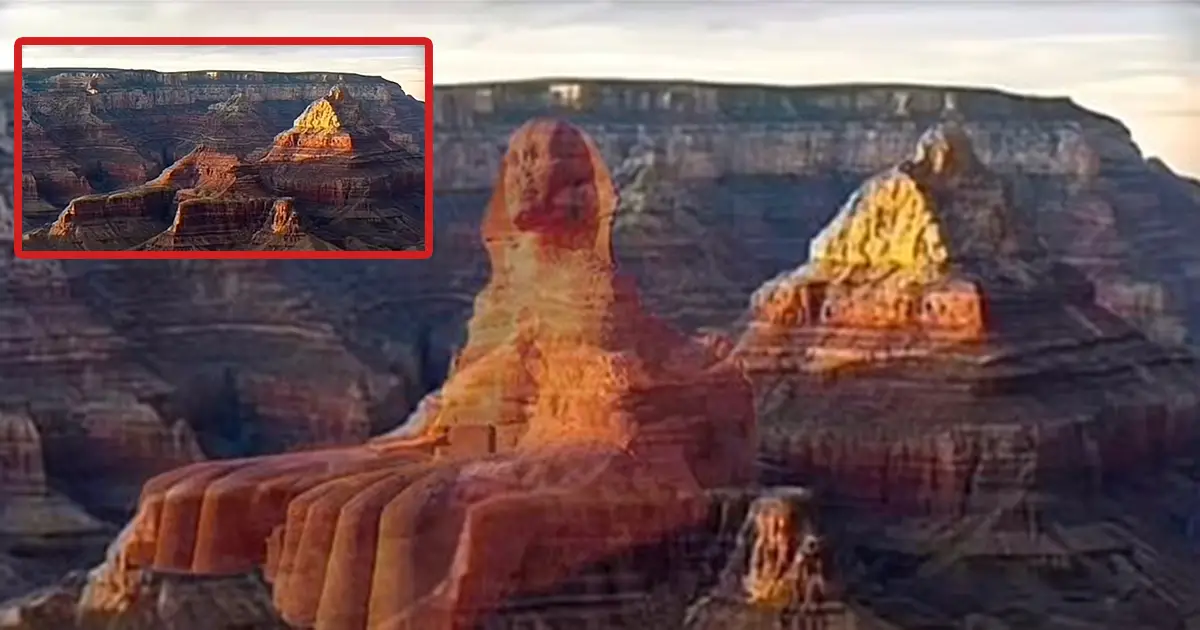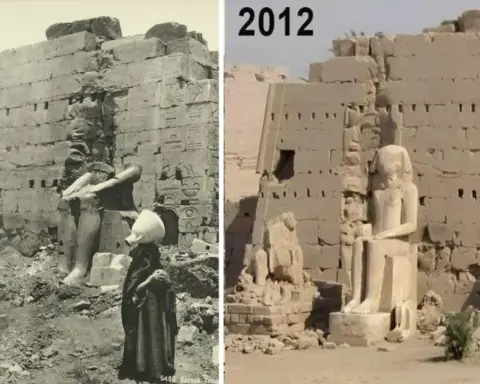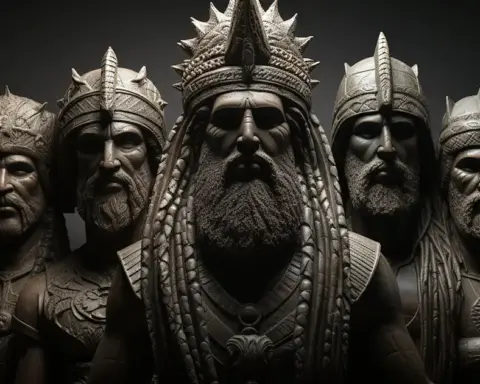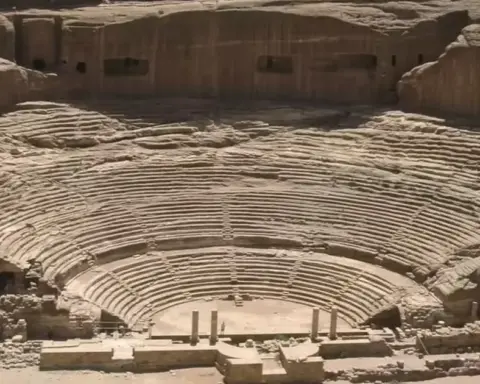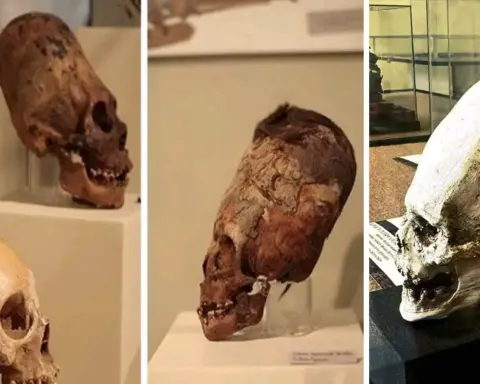In the heart of the American Southwest, where the Earth carves deep into its crust, lies a mystery as profound as the Grand Canyon itself. Among the natural cathedrals of stone and time, a formation known as the Vishnu Temple commands the horizon, its name invoking the divine.
But recent discussions have taken a turn towards the mythical, proposing a narrative as intriguing as any ancient legend: Could it be that a Sphinx and a Pyramid, those quintessential symbols of ancient Egyptian grandeur, have their counterparts in the vast wilderness of the Grand Canyon?
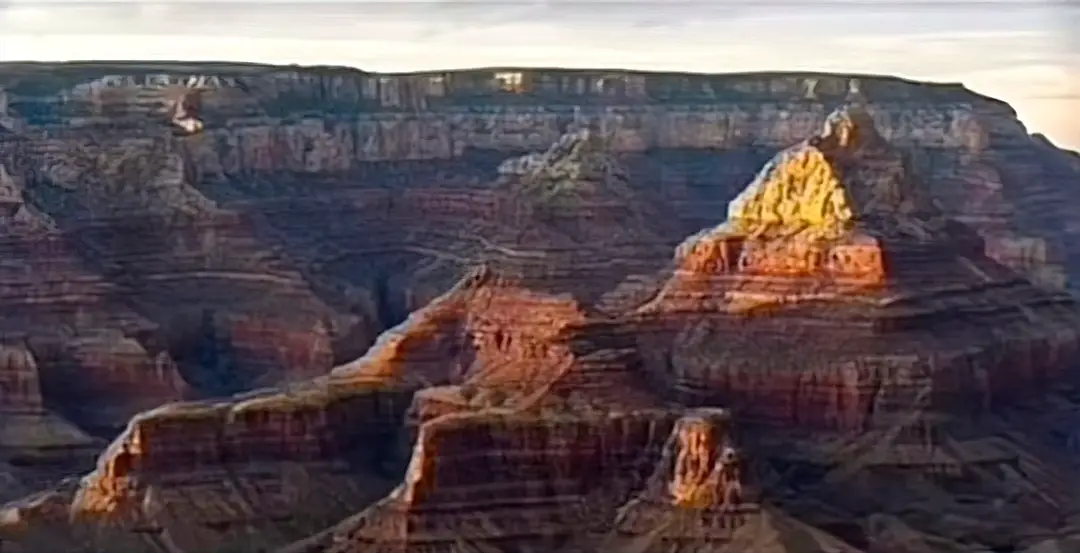
The Sphinx of the Grand Canyon
Imagine, if you will, a sphinx-like formation standing sentinel over the Grand Canyon, its origins shrouded in mystery. This concept isn’t merely about the whimsy of pareidolia—seeing faces in inanimate objects—but rather a provocative question about the ancient past. Could there have been a civilization capable of such monumental artistry, echoing the ancient Egyptians, here in what we now call the United States? The suggestion of a Sphinx overlooking the Colorado River invites us to reconsider the history of human civilization on the American continent.
A Hidden Pyramid Unveiled
Even more compelling is the notion of an ancient pyramid, buried by time and sediment, within the same mysterious landscape. This hypothetical pyramid, suggested to lie near the so-called Grand Canyon Sphinx, would radically alter our understanding of pre-Columbian history. Such a discovery would imply not just advanced architectural skills among indigenous peoples but also possibly hint at connections or parallel developments with ancient Egyptian civilization.
The idea of a pyramid in the Grand Canyon, however speculative, forces us to confront our assumptions about the capabilities and reach of ancient cultures. It challenges the conventional narrative that monumental architecture and complex societies were isolated phenomena, separated by vast oceans and insurmountable barriers.
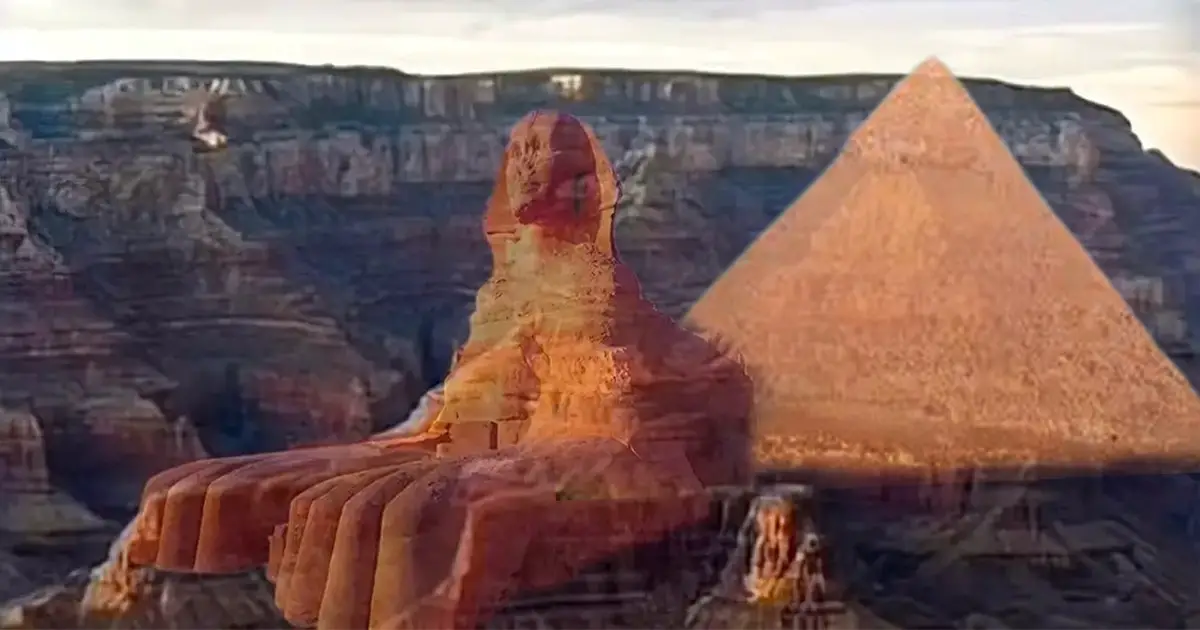
The Quest for Evidence
Despite the allure of these hypotheses, the search for concrete evidence remains fraught with challenges. The Grand Canyon, with its rugged terrain and protected status, is not easily combed by archaeologists and historians. The absence of direct evidence has kept the theory in the realm of speculation and mystery. Yet, it is precisely this lack of evidence that fuels the imagination and drives the quest for understanding further.
Skeptics and believers alike must navigate a fine line between open-minded exploration and the rigorous demands of scientific evidence. The possibility of a lost civilization within the Grand Canyon, capable of monumental architecture, remains a tantalizing enigma, urging us to look deeper into the shadows of the past.
The Implications of a Transcontinental Connection
If proven true, the existence of the Sphinx and Pyramid-like structures in the Grand Canyon would not just be an archaeological sensation; it would rewrite the story of human history. It would suggest a level of interconnectedness or parallel cultural evolution that is currently undocumented, challenging the very foundations of our historical and archaeological frameworks.
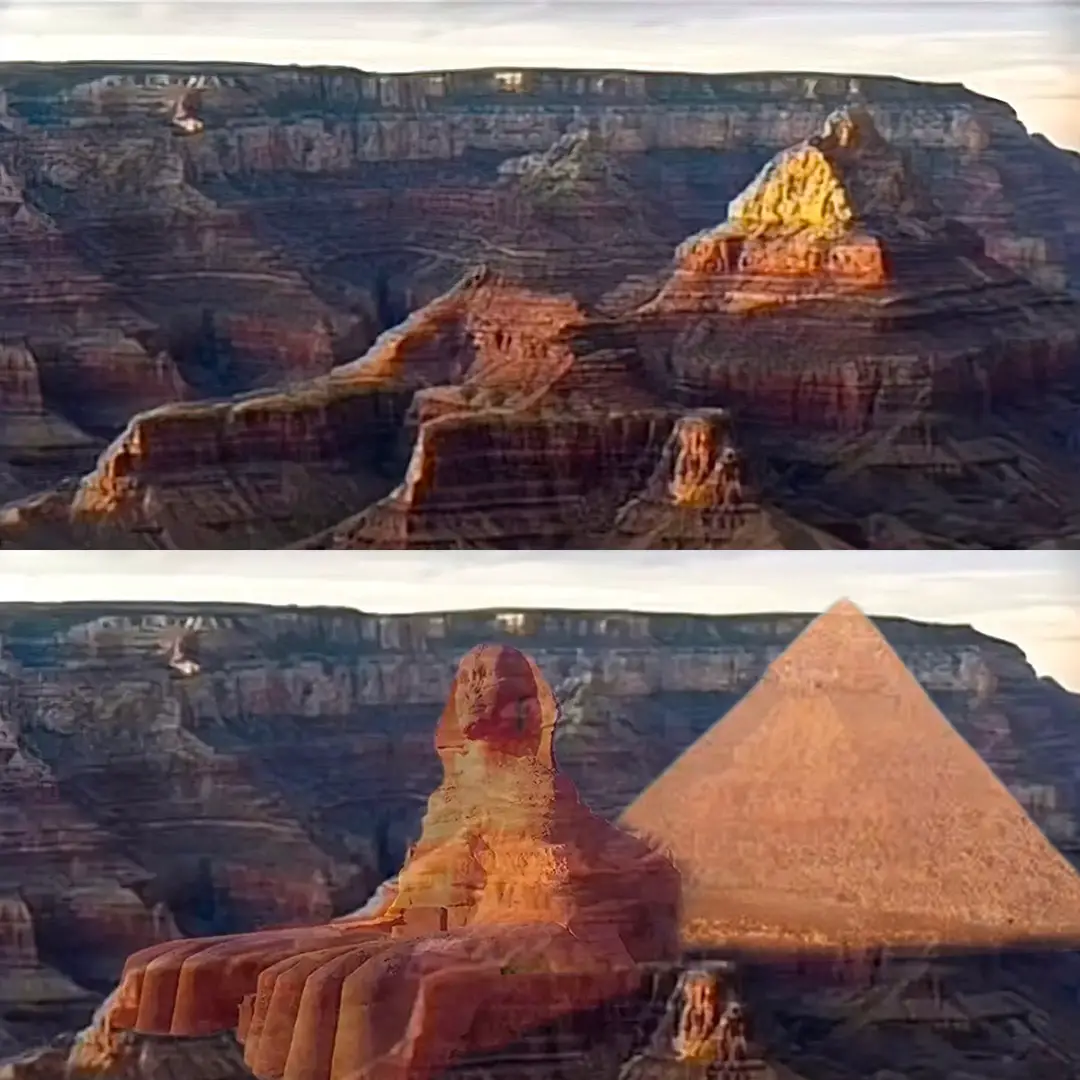
This scenario invites us to consider the global nature of ancient civilizations, and their ability to influence or inspire each other across continents or develop similar architectural expressions independently. The implications for our understanding of prehistoric cultural exchange, migration, and architectural innovation are profound.
Conclusion: A Journey into the Unknown
The mystery of the Vishnu Temple and its speculated ancient guardians— a Sphinx and a Pyramid in the Grand Canyon—serves as a metaphor for the endless quest for knowledge. It embodies the human drive to explore the uncharted, to question accepted narratives, and to seek answers in the silent stones of our planet’s most ancient landscapes.
As we peer into the depths of the Grand Canyon, let us also delve into the depths of our curiosity and imagination. The journey to unravel the secrets of our past is not just an archaeological pursuit; it’s a testament to the enduring human spirit, a quest that spans the breadth of our history and the depth of our wonder. In the shadow of the Vishnu Temple, the mystery remains an open invitation to dream, explore, and perhaps one day, discover.

